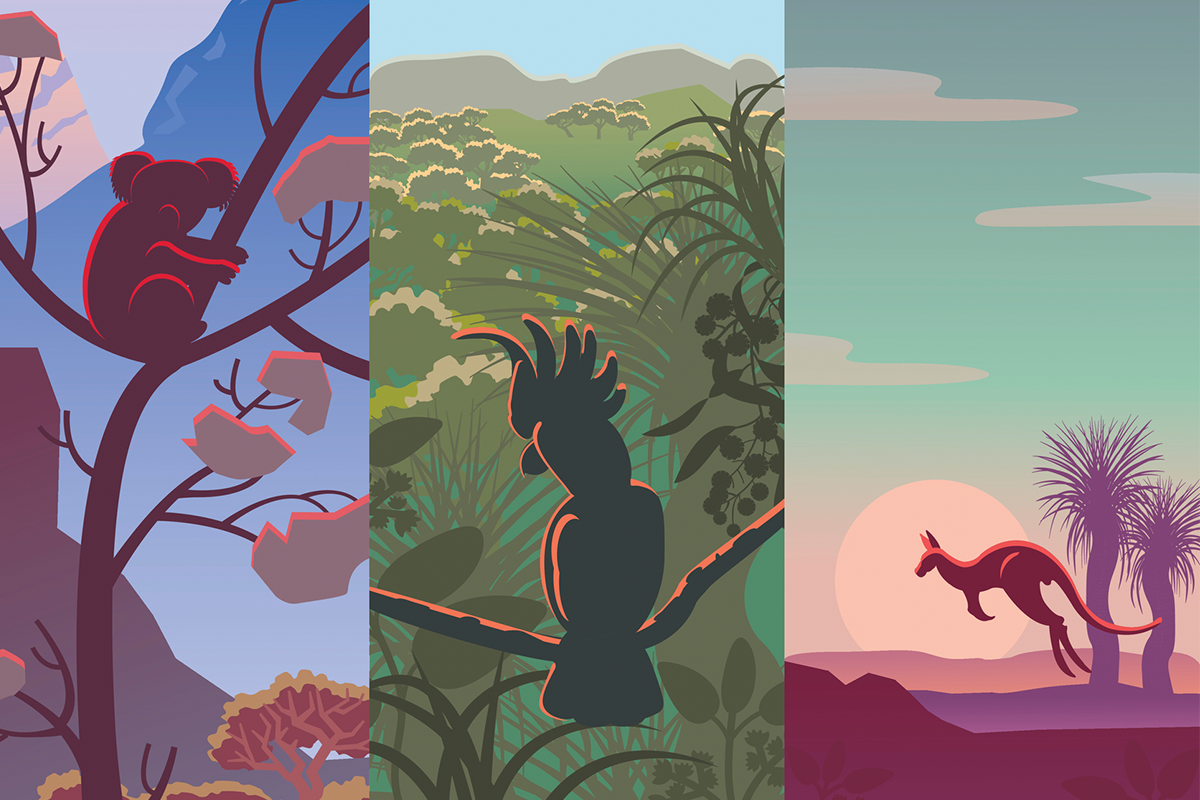Diploma Programme (DP) graduate Maja Johansson Hedstroem reminds us of the value of theory of knowledge (TOK) and applying critical thinking in the real world with reference to her experiences with the Australian bushfires.

“Simply shifting your gaze, however slightly, can change the scope of an entire conversation.”
I’m going to start off with something controversial. I loved studying theory of knowledge (TOK). It taught me how to think. It taught me how to think thoroughly, critically and broadly. It taught me how to scan any given topic in the search of new perspectives. It taught me that simply shifting your gaze, however slightly, can change the scope of an entire conversation.
I have spent the past few months in Australia, a place located on the opposite side of the globe from where I grew up in Sweden. Back home, nothing much happens. It is peaceful and quiet, characterized by a stillness of nature I proudly would argue cannot be found elsewhere.
In contrast to the Swedish tranquility, bushfires have wreaked havoc in Australia. Like some kind of devilish creature, they have briskly swept in to demolish the diverse landscapes of the continent while looming outside metropolitan cities. With a smirk on its lips, it devoured billions of organisms and its blazing eyes were set on us. Firefighters risked their lives to prevent civilians from losing theirs. Families were distraught, homes were lost.
Looking at any given newspaper and I guarantee that a similar picture was portrayed, possibly less figuratively. I received frightened messages from friends and family at home who wondered whether I was safe from the suffocating smoke. Yet, in Melbourne, where I was based for the most part, I honestly wasn’t particularly bothered by the flames. It’s not that I ignored the situation. I promise you, I didn’t. Rather, I had to actively seek it out. It’s just that life mostly continued as normal, despite the fact that parts of the country were on the brink of ecological collapse.
Inside or outside the eye of the storm
I believe that this is often the case: when you are in the midst of a serious situation, you seldom experience it with the same sense of urgency that outsiders may do. After all, it can be difficult to even access all the facts in the middle of a crisis. It is like being in the eye of a storm. The information keeps swirling around you, so close and clearly within your reach, but everything is changing with such speed that it’s impossible to grasp anything. As a part of Australia, Melbourne was in the eye of the storm. Melbournians and others saw the calm, while the rest of the world saw the storm. What these differences in perception depend on, I don’t know. Maybe it all boils down to wanting to lessen the impacts of the storm, either by taking precautions beforehand or coping once it is already there.
When you witness the storm from afar, you can just as quickly lose track of all the facts. Instead of having multiple variables, you lump them all together into one simple, seemingly truthful story.
Obviously, that is misleading. A tornado may look like a column from afar, but it is nonetheless a tornado. Things are rarely as easy as they seem. This is particularly important to consider in times of uncertainty.
“When you’re in the midst of a serious situation, you seldom experience it with the same sense of urgency that outsiders may do.”
The moral of the story: It’s all fake anyways?
I don’t want to give the standard TOK explanation to the varying perceptions of the bushfires by claiming that the true impression of them depends on perspectives. It does not. Regardless of your point of view, the fires were catastrophic on an unprecedented scale. However, the scorched earth that results from the fires occurs every season and forms an integral part of the Australian flora and fauna. Most Australians are aware of this, but many external sources may not be. For outsiders, the fires are typically only seen as hazardous. In Australia, they are an essential part of life. What was new this time was that they were hazardous beyond our control.
Like so often before, in the heat of this debate, the opposing side’s take on the bushfires have been disregarded as, “fake news”. Some people have attributed the extent of the fires to arson; some others to climate change. Some have supposedly blown things out of proportion, since the bushfires are unavoidable; some do not seem to care, due to the same reason. Personally, I highly dislike the term, “fake news” because from what I’ve witnessed, it is too often used as a shield to simply deflect the charge of the opponent rather than countering it with an actual argument.
“What we pay attention to and how we view the world can be highly influenced by our circumstances”
Perspectives come and go. There’s seldom just one correct version of an event. Not all of society can ever be galvanized into action. That is okay and justifiable as a means to progress with life. At the same time, the complementary international outcry has been a fantastic wake-up call for how things have run out of control. In both cases, what we pay attention to and how we view the world can be highly influenced by our circumstances.
The light at the end of the tunnel
During my time in Australia, I stopped by in Sydney. My conscience was dripping with sweat as I witnessed the smog-like mist surrounding the city. Still, little mention was made of the devastation that the fires were inflicting just a few kilometers away. For me, the uncontrollable extent of the fires acted as a red flag, waving violently to stop the rapid escalation of the climate crisis. It was and is disheartening to see how our strongest efforts still were insufficient.
We generally like to make things easy for ourselves, myself included. In the lack of concrete directives, it is easy to lose all hope and with tunnel vision keep doing the same thing as usual. Different explanations, debates and news stories bombard you from all directions. When that happens, on the one hand, we have our instincts to tell us the right course of action, but they may prove misleading if we use the same old pair of glasses to perceive the world. Instead, try to apply those critical thinking skills your teachers must have reiterated so many times. Remember to always look up and shift your gaze, regardless if you’re on the inside or outside. There’s always something to learn from the other side once you are out of the tunnel.

Maja Johansson Hedstroem is an IB graduate of Katedralskolan in Uppsala, Sweden. After having reconsidered a decision regarding a career in medicine, she decided to take a gap year to follow that wanderlust of hers before pursuing a degree in law. Besides exploring new cultures, Maja also has a keen interest in history and writing―preferably combined―and thrives on runs and skiing ventures outdoors.
To hear more from Diploma Programme (DP) graduates check out these IB programme stories. If you are an IB grad and want to share your story, write to us at alumni.relations@ibo.org. We appreciate your support in sharing IB stories and invite you to connect with us on LinkedIn, Twitter and now Instagram!
If you enjoyed this story, consider reading more below:



